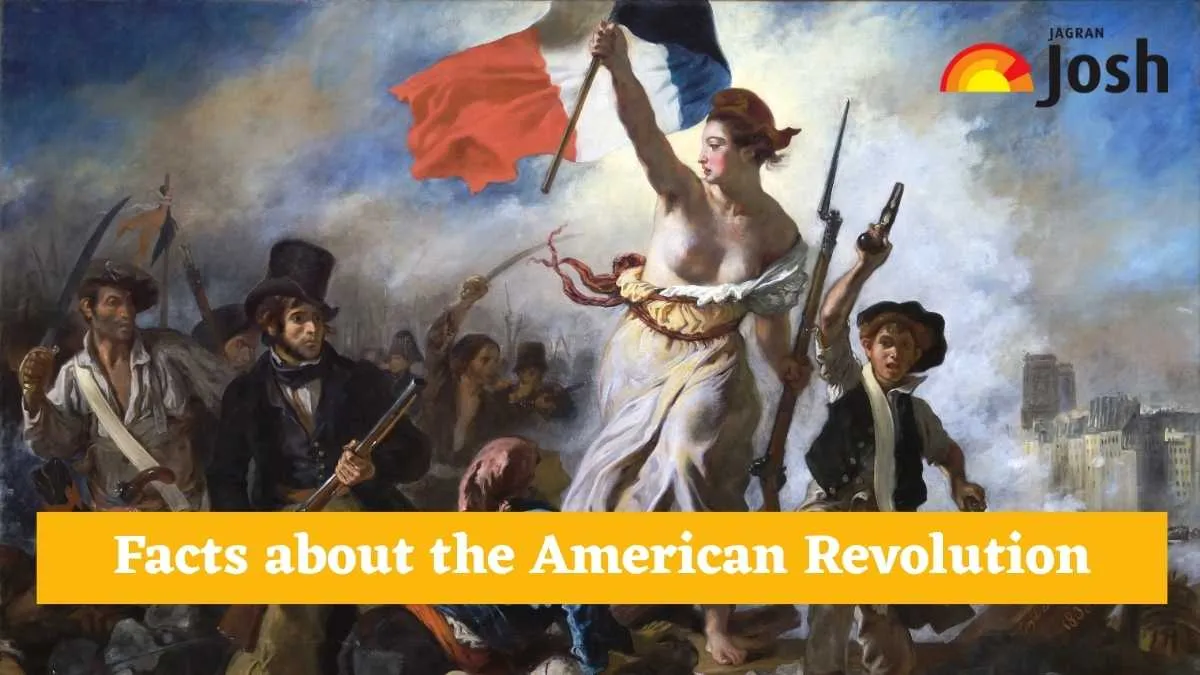The American Revolution was a seismic change that shattered colonial bonds and created a new country called the United States of America. This independence battle (1775-1783) was sparked by simmering concerns about taxation without representation and a growing yearning for self-government. As a result, the thirteen American colonies were up against the mighty British Empire. It was fought on battlefields from Massachusetts to South Carolina. The motivation behind the American Revolutionary War was embodied in writings such as the Declaration of Independence. However, the fundamental facts about the American Revolution tell the story of enormous hurdles, surprising alliances, and profound sacrifices that defined the war for liberty, ultimately transforming the global political scene. Let's take a look at these Revolutionary War facts one by one hereon.
5 Facts about the American Revolution
The following American Revolution facts reveal the challenges, triumphs, and unique aspects of this defining period in American history:
1. The “Shot Heard Round the World” Marked the Beginning, But Independence was not Declared Over a Year Later
The Battles of Lexington and Concord, which took place on April 19, 1775, are often regarded as the beginning of the American Revolutionary War. British troops marched from Boston to Concord to take colonial military supplies, but they were intercepted by Minutemen, a local militia near Lexington. An unknown shot was fired unannounced, resulting in a struggle. Despite being a minor military action, the events of that day not just sparked colonial opposition but also signified an irreversible shift from protest to armed confrontation. This event was later commemorated by Ralph Waldo Emerson as "shot heard round the world." The expression later became a signal that marked the start of a revolution with worldwide implications for liberty and self-determination.
Check Out:Timeline of the American Revolution (1775 to 1783)
-1750750306625.jpg)
Ralph Waldo Emerson, whose 1837 poem “Concord Hymn” included “shot heard round the world
2. The Victory at Saratoga (1777) was a Major Turning Point for Securing the French Alliance
The turning point in the American Revolution came with the victory of America over British General John Burgoyne at Saratoga, New York, in October 1777. It helped them to convince France to formally enter the war as an American ally in February 1778. It sure was a thoughtful move, as after joining the cause, France provided essential financial aid, troops, and, crucially, naval power to America. This stretched British resources globally, directly contributing to the eventual British defeat at Yorktown in 1781, of course, with the aid of the French navy, which played a decisive role in trapping Cornwallis's army.
3. The American Revolution Sparked a World War
The struggle within America quickly spread beyond North America. France had already joined the war against Britain in 1778, whereas Spain and the Dutch Republic followed suit in 1779 and 1780, respectively. It contributed significantly to the United States' success. After all, as the leading naval power, Britain was forced to defend its vast empire against several opponents at the same time. Furthermore, critical resources and attention were diverted from the suppression of the American revolt.
4. Not All Colonists Supported the Revolution; Significant Numbers Remained Loyal to Britain
As per the historians, loyalists, or Tories—colonists who remained loyal to the British Crown—comprised about 15 to 20% of the white population. Their reasons varied from strong cultural or business ties to Britain to fear of instability or chaos. Whereas some distrusted the Patriot leadership, and enslaved people sometimes saw the British as potential liberators. Not to mention that the American Revolution was also a brutal civil war that pitted neighbor against neighbor, led to persecution, property confiscation, and ultimately the exile of tens of thousands of Loyalists after the war.
5. The British Promised Freedom to Enslaved People Who Fought for Them, While the Revolution’s Ideals Fueled Abolitionism in the North
In 1775, British Lord Dunmore issued a proclamation offering freedom to enslaved people. The slaves were owned by Patriots who would later join the British forces. So, thousands seized this opportunity. Conversely, the rhetoric of liberty and equality fueled the growth of the abolitionist movement in the Northern states. Even though liberty was the main agenda behind the Revolutionary War, the institution of slavery persisted, especially in the South. The British offer highlighted this hypocrisy and forced the issue, while the ideals of the Revolution sowed the seeds for slavery's eventual, though long-delayed, demise in the North. An estimated 5,000-8,000 Black soldiers fought for the Patriot cause, often with the promise of freedom.
Check Out: 7 Lesser-Known Facts about the Declaration of Independence
In conclusion, the American Revolution was far more complex than a simple war for independence against a distant king. It was a time of immense courage, profound sacrifice, strategic alliances, internal conflict, and unresolved contradictions whose legacy continues to shape the United States and the world today.
